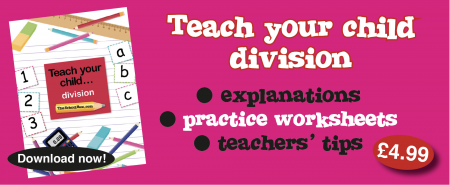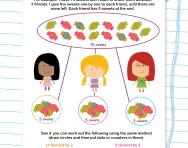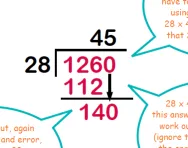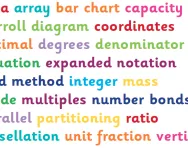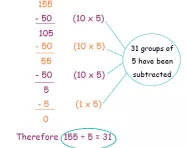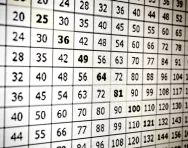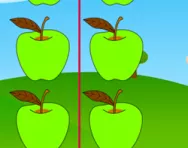TheSchoolRun.com closure date
As we informed you a few months ago, TheSchoolRun has had to make the difficult decision to close due to financial pressures and the company has now ceased trading. We had hoped to keep our content available through a partnership with another educational provider, but this provider has since withdrawn from the agreement.
As a result, we now have to permanently close TheSchoolRun.com. However, to give subscribers time to download any content they’d like to keep, we will keep the website open until 31st July 2025. After this date, the site will be taken down and there will be no further access to any resources. We strongly encourage you to download and save any resources you think you may want to use in the future.
In particular, we suggest downloading:
- Learning packs
- All the worksheets from the 11+ programme, if you are following this with your child
- Complete Learning Journey programmes (the packs below include all 40 worksheets for each programme)
You should already have received 16 primary school eBooks (worth £108.84) to download and keep. If you haven’t received these, please contact us at [email protected] before 31st July 2025, and we will send them to you.
We are very sorry that there is no way to continue offering access to resources and sincerely apologise for the inconvenience caused.
Teachers' tricks for division

In Key Stage 1, make division real with objects
Children are usually introduced to the topic of division in Year 2, though they may have already been using some division skills (for example when halving numbers) without actually referring to them as ‘division’.
At this age using real-life scenarios to help your child understand the concept of dividing is really useful. So if there are 12 sweets to be divided between 2 children have them work out beforehand how many each should get, before physically sharing out the sweetie loot in a ‘one for you, one for me’ way. By the end of Year 2 children should be pretty confident in halving most even numbers up to 20.
They will probably also learn to divide by 2, 5 and 10. These are the multiplication tables they’ll have been practising most too, so it makes sense to transfer those skills onto division. Again, use real-life opportunities to practise. For example: give your child 20 pennies and explain that the pennies need to be divided equally between 5 children. Get them to draw five stick men on a piece of paper, then encourage them to share out the pennies, 'giving' one to each stick child, until there are none left.
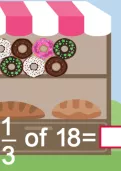
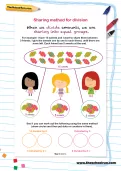
Claim FREE Division Resources Today
- Year-by-year division worksheets
- Interactive division tutorials
- Teachers' tips and tricks
Learn division tables as well as times tables
As they move up into Key Stage 2, your child will continue to practise division and will learn to divide by numbers 0-10. They’ll also get more familiar with recording division calculations using the division sign.
It can still be helpful for children to practise sharing actual objects out, but they should move on to using the inverse operation to help them with their mental maths. By learning division facts as they master each multiplication table they'll be able to use their knowledge of inverse operations at speed (so, for example, if someone asks them to divide 42 by 7, they'll remember that 7 x 6 = 42 and know the answer is 6). Children should keep practising their division facts for all of their times tables so that they know these off by heart.
Use factors to help with division
Our biggest fear as parents, when it comes to helping children with maths at home, is that we’ll teach them the wrong way and confuse them further! One useful strategy we use in the classroom today, that may be new to you, is breaking down the numbers that the larger number is being divided by. This is known as using factors to help.
For example:
120 ÷ 20 is the same as 120 ÷ 2 ÷ 10
120 ÷ 2 = 60
60 ÷ 10 = 6
So 120 ÷ 20 = 6
Count out remainders
In Year 4 children learn about remainders. To give this seemingly abstract concept some meaning, think of some division story problems where there’ll be tangible objects left over after the division calculation (the remainder). For example:
Becky has 60 rubbers which she needs to share between 28 friends at her party. How many rubbers does each child get? How many remaining?
One way of working this out would be to get 60 counters and divide them into 28 equal groups. This is worth doing once, just to make the concept really clear, but it will take a while and children may need to answer a question like this in a test where they will not have access to counters! One way of working out division questions, is by using the inverse operation, so thinking about what you could multiply 28 by to make 60. Demonstrate this logic to your child: they could try 28 x 3 which is 84, which is too high. But 28 x 2 would give 56, which is 4 below 60, so the answer to the story problem would be that each child at the party would get 2 rubbers with 4 left over.
Dividing by 10 and 100
Does your child understand what happens to a number when you divide (or multiply) it by 10 or 100?
It is important that children understand that on the right of each whole number is an invisible decimal point, and that when you divide by 10 a number slides one place to the right, so 34 becomes 3.4, 570 becomes 57, 6 becomes 0.6.
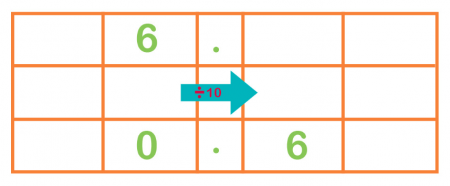
When a number is divided by 100, it has to slide two places to the right, so 5910 becomes 59.1, 300 becomes 3, 6 becomes 0.06.
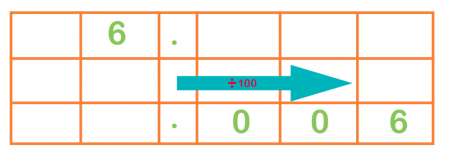
Once children are very confident with this concept, this is a fun activity to try at home: have a calculator and together choose a large number to type in, for example 4560. Then, without showing them, choose to type in x or ÷ by 100. Then show them the answer. Can they tell you what operation you’ve done? Take it in turns to choose numbers to do this to.
Memorise divisible numbers
Children should know by the end of Key Stage 2 what numbers are likely to be divisible by certain numbers. So for example they should know:
- A number is divisible by 2 if the last digit is a 0, 2, 4, 6, 8.
- A number is divisible by 4 if the last two digits are divisible by 4.
Ask them about any other rules they know – for instance, how do you know if a number is divisible by 5? (It's divisible by 5 if t ends in a 0 or 5). Knowing such rules adds to their understanding of the number system as a whole.
Mini-investigations on the divisibility of numbers can make a fun puzzle out of this concept. Give your child a statement such as the following:
All multiples of 4 can be divided by 2.
A number ending in 5 can never be divided by 3.
A number with two zeros at the end can always be divided by 4.
Ask them to decide if the statement they were given is true or false, trying out several examples to back up what they have decided. Can they give you a good explanation of why the statement is true or false?
